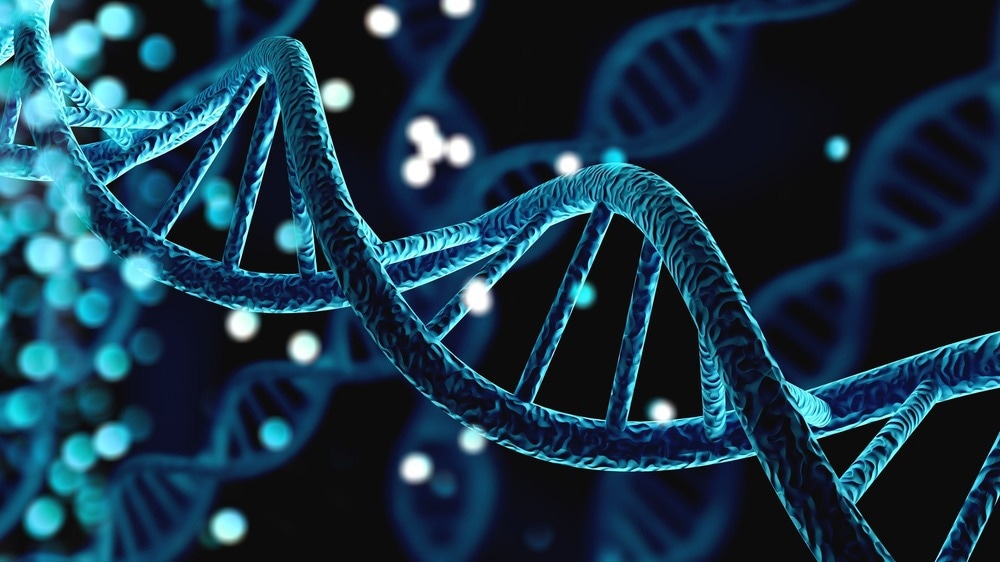Plasmonic nanoactuators mimic living systems in terms of their adaptability to uncontrolled environments. Thus, they have been applied in human-centered robotic applications and necessitated smart-ligand functionalized plasmonic nanoparticles to control their arrangement under external stimuli.

Study: DNA-Functionalized Silver Nanoparticles in an Alcoholic Solvent for Environment-Dictated Multimodal Actuation. Image Credit: Billion Photos/Shutterstock.com
An article published in the journal ACS Applied Nano Materials fabricated silver nanoparticles functionalized with double-stranded (ds) DNA and bearing poly (acrylic acid) (PAA) for storing elastic energy, which was released under external stimuli like heat, light, or pH.
The DNA-functionalized nanoparticles assembly, induced by heating or light excitation caused dsDNA’s terminal opening and entropic repulsion to be restored into individual DNA-functionalized nanoparticles. Moreover, variations in pH resulted in the PAA carboxyl group’s charge association/dissociation, which induced an electrostatic force switch that controlled the DNA-functionalized silver nanoparticles' actuation.
Based on environment-induced adaptability, DNA-functionalized nanoparticles were featured with the adaptability to adjust the actuation according to the external stimulus, based on the terminal base pairing of dsDNA, modulated by organic alcohol. The present study is an important contribution to self-sustained, environment-activatable, intelligent nanosystems.
DNA-Functionalized Nanoparticles-Based Nanoactuators
Actuators transform external stimuli into physical motion, which is essential for constructing intelligent biomimetic systems. Plasmonic nanoparticles with the controlled movement have applications in information storage, smart windows, and nanorobotics.
Various nanoactuators were designed based on different hybrid materials, including hydrogels, polymers, and inorganic nanoparticles. Moreover, surface functionalization of the designed nanoactuators facilitated the tailoring of their physicochemical properties in spatial configuration.
DNA-based platforms provide flexibility and versatility for building complex nanoparticle structures using DNA programmable interparticle interactions. The DNA-functionalized nanoparticle is a nanomaterial biocomposite that forms a bridge between biological systems and nanomaterials. Multiple strategies were explored to construct DNA-functionalized nanoparticles for their potential applications in nanomedicine.
Apart from biological applications, DNA-functionalized nanoparticles are used in materials science to create unique architectures and crystal engineering that are not feasible through top-down construction approaches. The repulsions and attractions among ds DNA-functionalized nanoparticles can be modulated through the outermost DNA base pair’s breathing. The blunt end stacking occurs among nanoparticles due to the pairing of terminal DNA base pairs leading to their spontaneous assembly.
On the other hand, the outermost unpaired DNA bases stabilize the nanoparticles due to steric repulsions. The thermal and photothermal effects on DNA base pairs may cause the actuation of the DNA-functionalized nanoparticles. Furthermore, tethering the DNA-functionalized nanoparticles with a noninterfering ligand may be applied in multimodal actuation.
DNA-Functionalized Silver Nanoparticles for Multimodal Actuation
In the present study, plasmonic actuators were developed based on ds DNA-functionalized silver nanoparticles bearing PAA. These “three-in-one” nanoactuators were adjustable to changing external stimuli, and PAA served as a passivating ligand. Surface functionalization of silver nanoparticles induced responsive assembly and susceptible actuation through light, heat, and pH.
The terminal breathing of ds DNA was responsive to light and temperature, enabling photo and thermal responsive assembly and actuation of ds DNA-functionalized nanoparticles. Moreover, the PAA charge regulation endowed pH actuation in the prepared DNA-functionalized nanoparticles.
dsDNA’s terminal breathing modulation by alcohol, temperature, and irradiation, induced actuation of dsDNA-functionalized nanoparticles. The multimodality of the developed DNA-functionalized nanoparticles facilitated their potential application in multifunctional nanomachinery and remotely activated actuators.
The plasmon resonance in silver nanoparticles had broader coverage in the visible region, which allowed these nanoparticles to exhibit an environment-dependent response and promised its potential application in colorimetric sensors. Additionally, the noninterfering ligands and interparticle force control allowed the silver nanoparticles-based actuators to respond to the external stimuli (heat, light, and pH) steadily, rapidly, and precisely.
Thus, the DNA-functionalized silver nanoparticles were temperature and pH-responsive and could be used to sense the environmental parameters through colorimetry. Furthermore, the ds DNA-functionalized nanoparticles prepared in the present study could be used to fabricate the plasmonic films as high-resolution invisible patterns for information encryption and display based on external stimulus.
Conclusion
To summarize, biomimicking smart nanoactuators that respond to external stimuli come with sophisticated design and complex feedback algorithms for adaptative actuation. The nanoactuators based on DNA-functionalized nanoparticles that adapt to the changing environment were demonstrated in the present study.
The silver nanoparticles were surface functionalized with PAA and dsDNA. Furthermore, organic alcohol helped convert the interfacial molecular interactions to the regulated movement of nanoparticles, thus endowing the DNA-functionalized nanoparticles with environment-driven multimodal actuation.
The DNA-functionalized silver nanoparticles exhibited a narrow and slow response compared to the previously reported multimodal actuator that uses zinc oxide microwire/gold electrical junction. These DNA-functionalized nanoparticles were synthesized easily and were stimuli-responsive, indicated by the color change. Hence colloidal nanoactuators reported in the present study are more advantageous than previously reported actuators.
The sensitivity of the silver nanoparticles-based actuators to heat, light, and pH enhanced the degree of freedom to modulate the plasmonic nanoparticle’s motion to create multifunctional nanorobots. The DNA-functionalized nanoparticles prepared could have potential applications in tasks, including sensors, encryption, and information display, with reduced cognitive load and response latency.
Reference
Kong, L., Wang, L., Shi, Y., Peng, L., Liang, X., Wang, G., Mitomo, H. (2022). DNA-Functionalized Silver Nanoparticles in an Alcoholic Solvent for Environment-Dictated Multimodal Actuation. ACS Applied Nano Materials.https://pubs.acs.org/doi/10.1021/acsanm.2c01493
Disclaimer: The views expressed here are those of the author expressed in their private capacity and do not necessarily represent the views of AZoM.com Limited T/A AZoNetwork the owner and operator of this website. This disclaimer forms part of the Terms and conditions of use of this website.